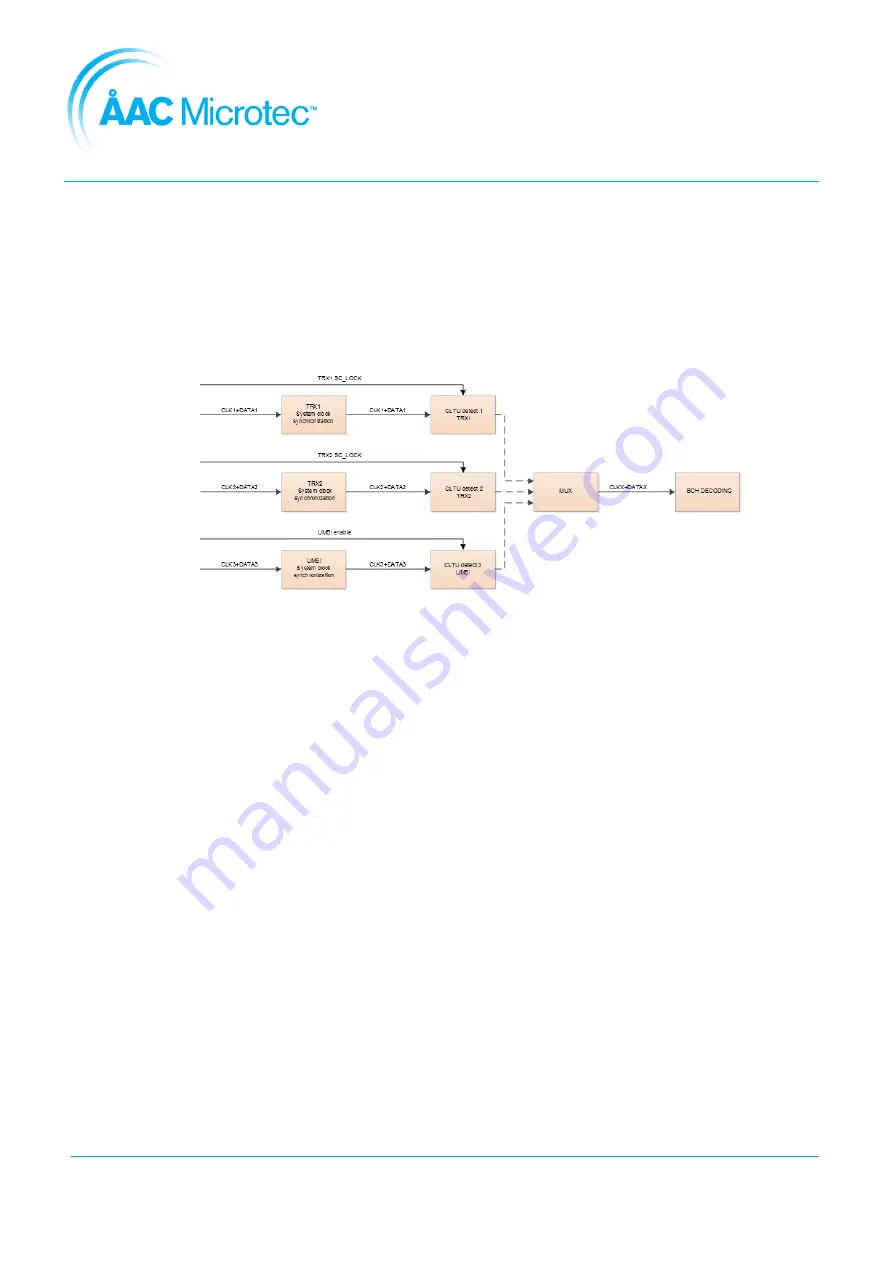
Document number
205065
Version
Rev. N
Issue date
2019-02-04
Sirius OBC and TCM User Manual
Page
118
of
174
•
When BCH has decoded the tail in the CLTU, all CLTU receptors are set in search
mode again, scanning for the start pattern ready to receive a new telecommand. If one
or more bit-errors occur in the tail sequence of the CLTU, the CLTU will be rejected.
•
The BCH interface does not “see” the data/cloc
k until the start pattern is decoded
correctly and the enable signal is set.
Figure 7.3
–
Telecommand Input Multiplexer
Derandomization of TC can be enabled/disabled by RMAP command (see 7.12).
Telecommands sent to the TCM-S must include a segment header, see 4.1.3.2.2 in [RD9]
The TCM-S supports the format of TC Transfer Frames described in [RD9].
7.6.1. Pulse commands
The CCSDS IP in the TCM has a built-in Command Pulse Distribution Unit (CPDU)
execution functionality with the possibility to execute up to twelve CPDUs without interaction
from software. A pulse command is decoded directly in hardware and it sets an output pin
according to the pulse command parameters. The CPDU_DURATION_UNIT is defined to
12.5 ms and the output is hence a multiple of this signal length.
The CPDU function can e.g. be used to reset modules in a spacecraft and also choose
which software image to boot, an updated version or the safe image. The last executed
pulse command can be read from the telecommand status data field.
For details about the format of pulse commands, see 7.10.3
7.6.2. COP-1
The CCSDS COP-1 functionality on the spacecraft is implemented mainly in software where
the command link control word (CLCW) is generated based on telecommand status. The
CLCW is inserted when the OCF_CLCW flag is set in the control register, otherwise user
data will be inserted instead. It will insert four bytes, and the CLCW is also included in the
CRC calculation for the master frame on both idle and data frames. The NO RF AVAILABLE
flag and NO BIT LOCK flag are set from external pins and will overwrite the respective bits
in the CLCW word which hence cannot be controlled by software. The flag NO RF
















































